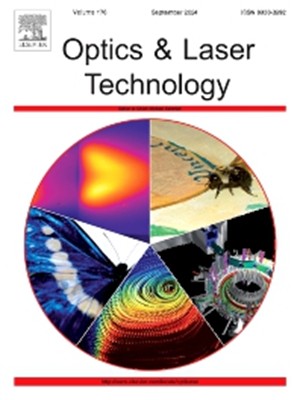Imaging through dynamic scattering media via deep unpaired data-driven single pixel detection
IF 4.6
2区 物理与天体物理
Q1 OPTICS
引用次数: 0
Abstract
Imaging through dynamic scattering medium is of great significance yet challenging topic in many fields. Computational single pixel imaging is capable of encoding object’s information into a sequence of intensity values by modulation and only a single-pixel detector is required to collect the relative distribution of intensity values. However, due to the perturbation of scattering media of dynamic scenes, the actual collected intensity values will deviate from the ideal intensity values, resulting in poor reconstructed quality. In this work, we present a new method for high clarity imaging through dynamic scattering scene based on single pixel detection and unpaired data-driven deep learning. Preliminary images are recovered firstly using measurement data. Then a cycle generative adversarial network trained on unpaired datasets is employed to improve the quality of the initial recovered images. Simulations and experimental results verify the effectiveness of the proposed method and shows good reconstructed quality at low sampling rate.
求助全文
约1分钟内获得全文
求助全文
来源期刊
CiteScore
8.50
自引率
10.00%
发文量
1060
审稿时长
3.4 months
期刊介绍:
Optics & Laser Technology aims to provide a vehicle for the publication of a broad range of high quality research and review papers in those fields of scientific and engineering research appertaining to the development and application of the technology of optics and lasers. Papers describing original work in these areas are submitted to rigorous refereeing prior to acceptance for publication.
The scope of Optics & Laser Technology encompasses, but is not restricted to, the following areas:
•development in all types of lasers
•developments in optoelectronic devices and photonics
•developments in new photonics and optical concepts
•developments in conventional optics, optical instruments and components
•techniques of optical metrology, including interferometry and optical fibre sensors
•LIDAR and other non-contact optical measurement techniques, including optical methods in heat and fluid flow
•applications of lasers to materials processing, optical NDT display (including holography) and optical communication
•research and development in the field of laser safety including studies of hazards resulting from the applications of lasers (laser safety, hazards of laser fume)
•developments in optical computing and optical information processing
•developments in new optical materials
•developments in new optical characterization methods and techniques
•developments in quantum optics
•developments in light assisted micro and nanofabrication methods and techniques
•developments in nanophotonics and biophotonics
•developments in imaging processing and systems

 求助内容:
求助内容: 应助结果提醒方式:
应助结果提醒方式:


